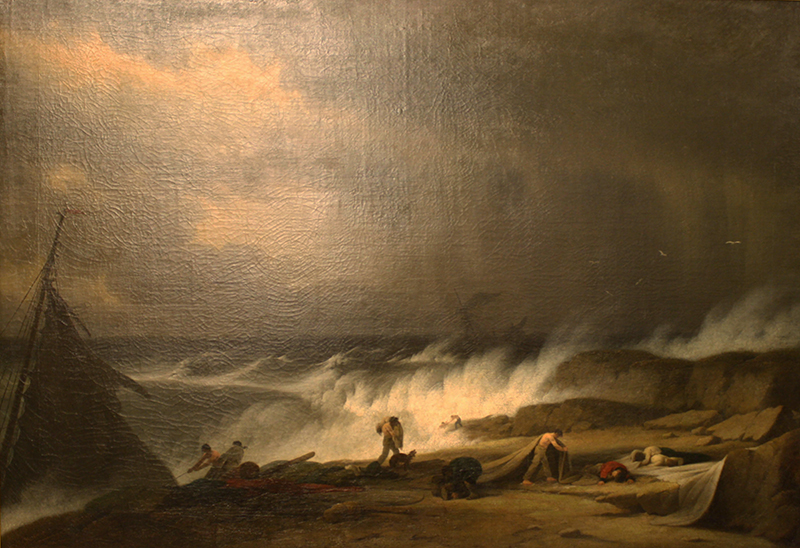May Object of the Month: "Shipwreck" attributed to Robert Freebairn
By Bowdoin College Museum of Art
The Bowdoin Gallery has just reopened after a major reinstallation. The gallery, which houses paintings from Europe and America dating from the sixteenth through the eighteenth centuries, has been largely untouched since the summer of 2015. In addition to including several important works highlighted in the new collections catalogue, Art Purposes: Object Lessons for the Liberal Arts, the Museum is also using this reinstallation as an opportunity to shed light on works that are less frequently exhibited.
Of these infrequently exhibited works, the most monumental is a late eighteenth century painting of a shipwreck that has only been exhibited once in the past three decades. The painting, acquired by the Museum in 1908 from Mrs. Helen M. Shepley, measures nearly four feet tall and six feet long. It was formerly attributed to French painter Claude-Joseph Vernet (1714–1789), but has recently been re-attributed to British painter Robert Freebairn (1765–1808). The work offers a heart-wrenching account of suffering in a coastal storm. Its dramatic expanses of dark sky and wind-lashed sea, barely contained by its gold frame, present a stark contrast to the idyllic and melancholic representations of evening light seen in similar paintings of the time. This work’s probable painter, Robert Freebairn, was studying painting in Rome around the time of its creation and sent back images of the Roman landscape and sea to the Royal Academy in London. When Freebairn returned to Britain, he drew upon this material for the rest of his career, choosing mainly to paint Italian scenes.
Though likely a depiction of the Mediterranean or British coast, this painting is reminiscent of Maine’s own rocky ledges and stormy seas. Many of the paintings purchased by James Bowdoin III around the same time contain similar subject matter, and it is possible Bowdoin, who came from a family of merchants, was attracted to maritime scenes because of their familiarity. Even now, more than 200 years later, the striking canvas evokes a strong appreciation for nature’s awesome beauty as well as its capacity for mass destruction.
Noah Dubay, class of 2019
Attributed to Robert Freebairn, British, 1764–1808, Shipwreck, ca. 1790, oil on canvas, Gift of Mrs. Helen M. Shepley, Bowdoin College Museum of Art.